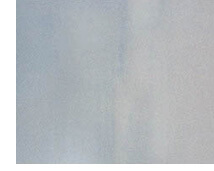Solving Lapping ProblemsSupport2021-05-17T09:14:52-04:00


LAPPING
Appearance of a denser color or increased gloss where wet and dry layers overlap during paint application.
POSSIBLE CAUSES:
- Failure to maintain a “wet edge” when painting.
- Use of a low solids “economy” paint.
SOLUTION:
- Maintain a wet edge when painting by applying paint toward the unpainted area and then back into the just painted surface. This technique (brushing or rolling from “wet to dry” rather than vice versa) will produce a smooth uniform appearance.
- It is also wise to work in manageable size areas; plan for interruptions at a natural break, such as a window, door or corner.
- Using a top quality acrylic latex paint makes it easier to avoid lapping problems because higher solids (pigments and binder) content makes lapped areas less noticeable.
- If substrate is very porous, it may need a primer/sealer to prevent paint form drying too quickly and reducing wet edge time.
- Alkyd paints generally have superior wet edge properties.
![]()
Note: Images & information provided by The Rohm & Hass Paint Quality Institute.



